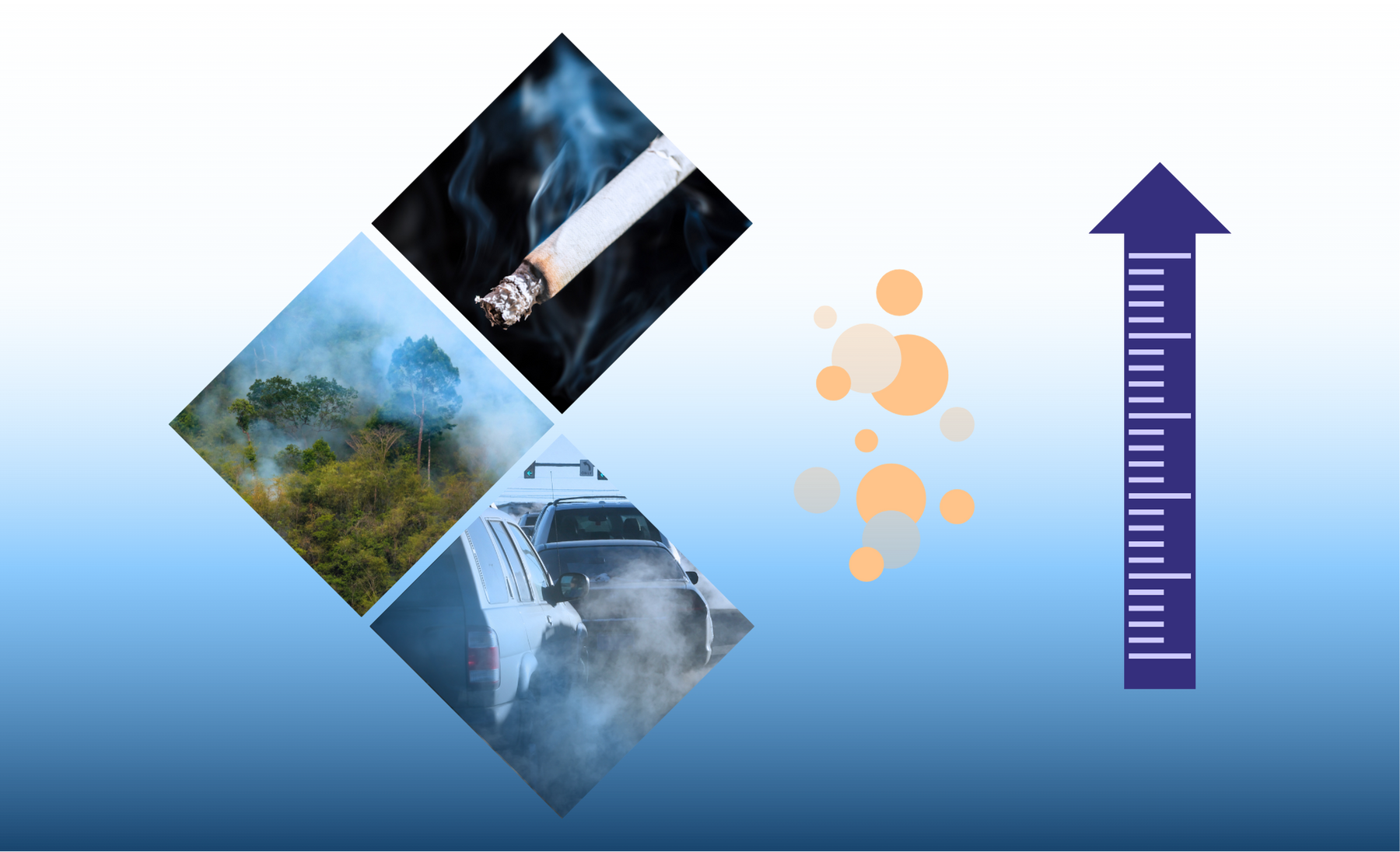The North Complex Fire is perhaps the most famous recent wildfire. Its smoke and that of other regional wildfires combined in September, 2020, to cause “orange San Francisco.” It’s estimated that hundreds of additional deaths were caused by this wildfire smoke. Some were due to how the smoke amplified the effects of COVID. But the North Complex Fire is not even the largest US wildfire.
Photo ©Christopher Michel, via Wikimedia.org
The impact of climate change is no longer a future prediction. Rather, it’s a present phenomenon. As lakes, rivers, and aquifers dry up in some regions while other parts of the world experience unprecedented floods, another visible indicator of climate change is emerging: more frequent and severe wildfires. This trend is certain to continue, and even accelerate. And it has huge implications for human health. (Metalmark’s Tatama air purifier can help organizations deal with wildfire smoke in a way that MERV filters can’t.)
Let’s first look at the extent of the problem
According to the National Interagency Fire Center, the 10 individual years with the largest U.S. acreage burned by wildfires have all occurred since 2004. There is now an average of more than 70,000 wildfires per year!
The greatest number of wildfires, and the steepest increase, is in the US West and Southwest, extending north into Canada. One Metalmark team member visited Jasper (Alberta, Canada) and Yellowstone (Wyoming) National Parks in 2020 and was driven out by smoke that burned eyes and throat. Parks like Jasper are now experiencing annual wildfire events that result in park closures that devestate local economies.
Just in 2020, California experienced nearly 9,900 wildfires burning over four million acres.
The impact of these events are not just felt locally, however. Smoke from wildfires can travels thousands of miles. People in the Northeast can literally be breathing in smoke from California. Wildfire smoke has been known to elevate air quality warnings to orange and even red levels in the East.
Wildfire smoke is very dangerous
According to California’s Air Resources Board:
“Wildfires produce a range of harmful air pollutants, from known cancer-causing substances to tiny particles that can aggravate existing health problems and increase the risk of heart attack or stroke. Particulate matter (PM) is the principal pollutant of concern from wildfire smoke for the relatively short-term exposures (hours to weeks) typically experienced by the public. Particles from smoke tend to be very small (with diameters of 2.5 micrometers and smaller). They are small enough to get deep into the lungs and the tiniest, ultrafine particles can pass directly into the bloodstream. The association between PM2.5 and heart and lung health effects is well documented in scientific literature.
“It can be especially dangerous for children, the elderly, pregnant women and people with heart or respiratory conditions.”
Meanwhile, researchers are finding that the combination of PMs and ozone, a highly toxic combination, is occurring more frequently due to wildfires.
Unfortunately, the danger is not just restricted to the outdoors. About half of the outdoor pollution level is found inside buildings, including commercial buildings, schools, and workplaces. And since people spend 90% or more of our time indoors–where outdoor pollution is joined by VOCs, viruses, bacteria, mold, and other airborne threats–the vast majority of air pollution risks are attributable to the air we breathe indoors.
One Metalmark team member recounts the experience of visiting Kuala Lumpur, Malaysia. Smoke from Indonesia, which still practices slash-and-burn agriculture, had traveled 1,000 miles to there. Even though he was spending his time in Western-style hotels and office buildings equipped with modern HVAC systems, by the third day he was waking up with a sore throat.
One obvious solution is that we could just wear N95 masks all the time, but that’s probably no more likely to be adopted in response to wildfires than it has been for COVID.
Thankfully, there is a better solution
New self-cleaning commercial air purifiers offer both HEPA grade filtration and the ability to catalytically destroy VOCs. In minutes, the systems convert collected pollutants into water and clean air. Through this self-cleaning process, particulates trapped on the filter are removed to prepare the filter for additional usage, thereby reducing maintenance and hassle, lowering cost, and avoiding landfill waste. This new type of air purification system not only improves indoor air quality, but drastically reduces the impact of air purification systems on the environment.
These new purifiers offer a way for organizations to protect their people from the harms of wildfire smoke, wherever the fires and people may be.

Tatama Air Cleaner
For commercial new construction or retrofits into existing facilities
Tatama uses Metalmark’s advanced HEPA-grade filters to capture airborne particulates, smoke, VOCs, and pathogens, including viruses and bacteria.

Sierra Air Filters
For your existing commercial HVAC systems
The HVAC filter with enhanced protection against wildfire smoke. A simple drop-in replacement with no change to air flow or pressure.



